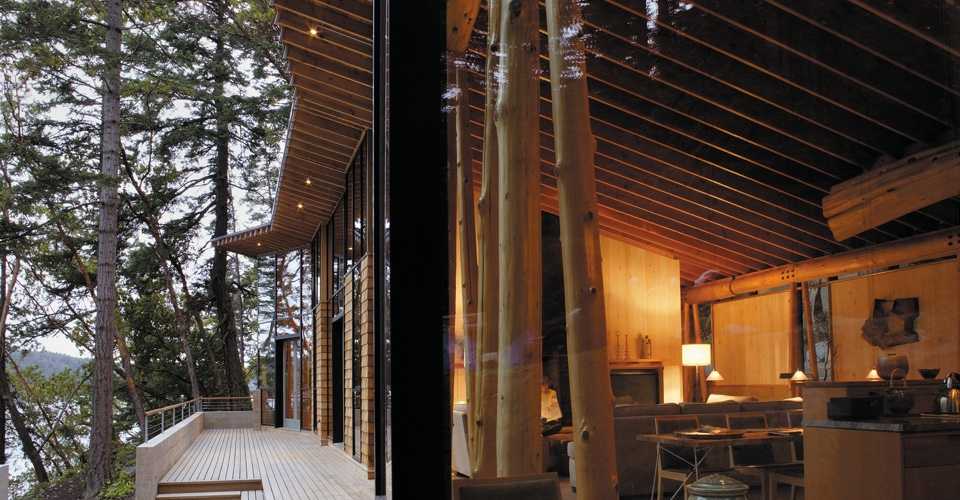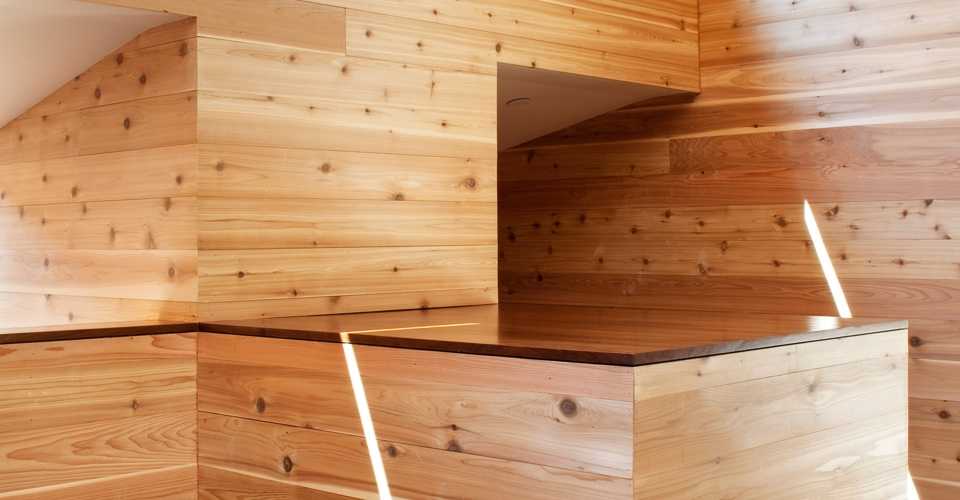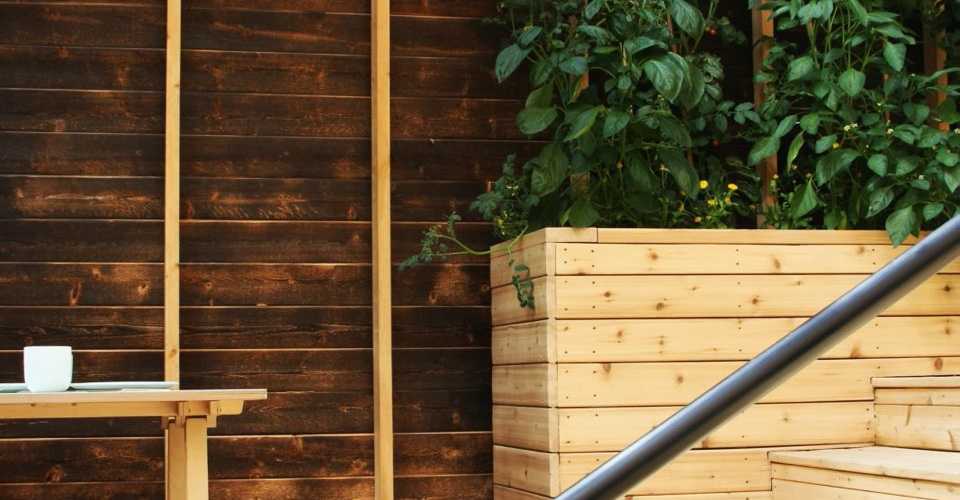Back
Back
Back
Back
Back
Back
Back
Back
Back
Back
Back
Back
Back
Back
Back
Back
Back
Back
Back
Back
Back
Back
Back
Back
Back
United Kingdom
Characteristics & Properties of Western Red Cedar
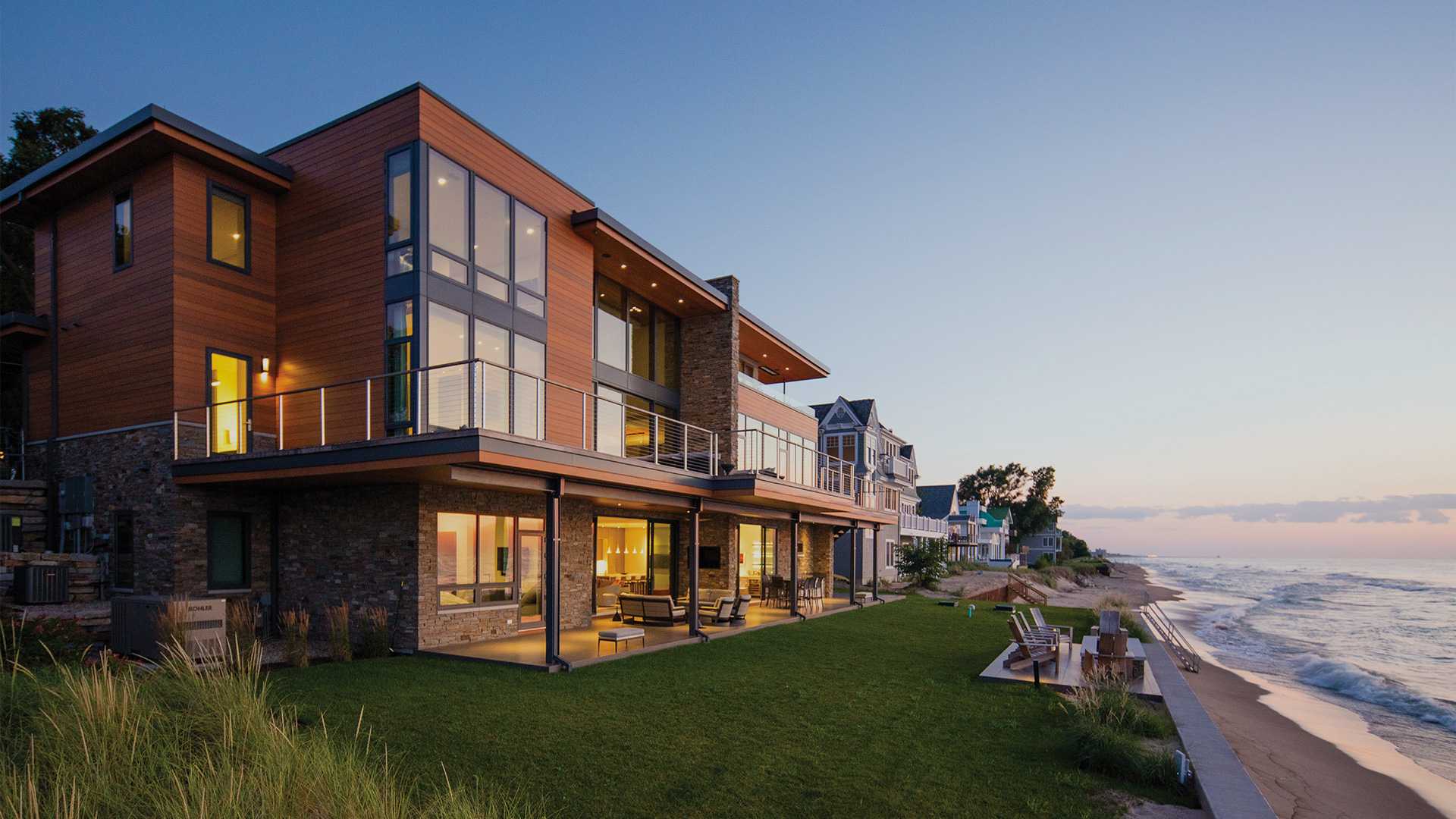
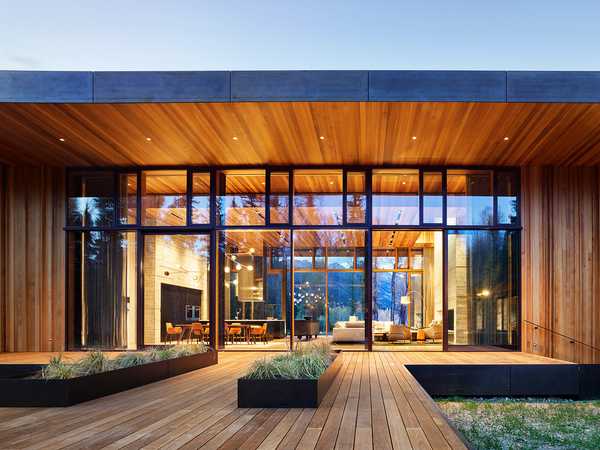
Physical Properties
Physical Properties
Density
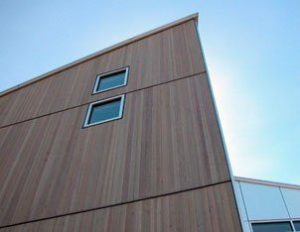 One of the lightest commercial softwoods, the density of Western Red Cedar at oven-dry conditions is approximately 21 pounds per cubic foot with a relative density (specific gravity) of 0.32. Comparative oven-dry densities of cedar and some other softwood species are given in the Table 1 (in the Product Selection tab).
One of the lightest commercial softwoods, the density of Western Red Cedar at oven-dry conditions is approximately 21 pounds per cubic foot with a relative density (specific gravity) of 0.32. Comparative oven-dry densities of cedar and some other softwood species are given in the Table 1 (in the Product Selection tab).
Cedar’s low density enhances its insulation value and makes it an easy wood to transport and handle.
Dimensional Stability
Like all woods, Western Red Cedar is hygroscopic and will absorb or discharge moisture to attain equilibrium with the surrounding atmosphere. However, it has a very low shrinkage factor and is superior to all other coniferous woods in its resistance to warping, twisting and checking. The size differential between dry and unseasoned Western Red Cedar is given in Table 2 (in the Product Selection tab). Shrinkage in both the radial and tangential directions is given in Table 3 (in the Product Selection tab).
Thermal Conductivity
Wood is an excellent thermal insulator. This is an important characteristic since good thermal insulators help keep buildings cool in the summer and reduce heating costs in the winter.
The conduction of heat in wood is directly related to its density. Woods with low density have the highest thermal insulating value because such woods contain a high proportion of cell cavities. In dry wood, these cavities are filled with air which is one of the best known thermal insulators.
With its low density and high proportion of air spaces, Western Red Cedar is the best thermal insulator among the commonly available softwood species and is far superior to brick, concrete and steel. It has a coefficient of thermal conductivity (k value) at 12% mc of 0.74 BTU inch/ft2h degrees F. The R value (the reciprocal of k) for Western Red Cedar is 1.35″ (34mm) of thickness.
Acoustical Properties
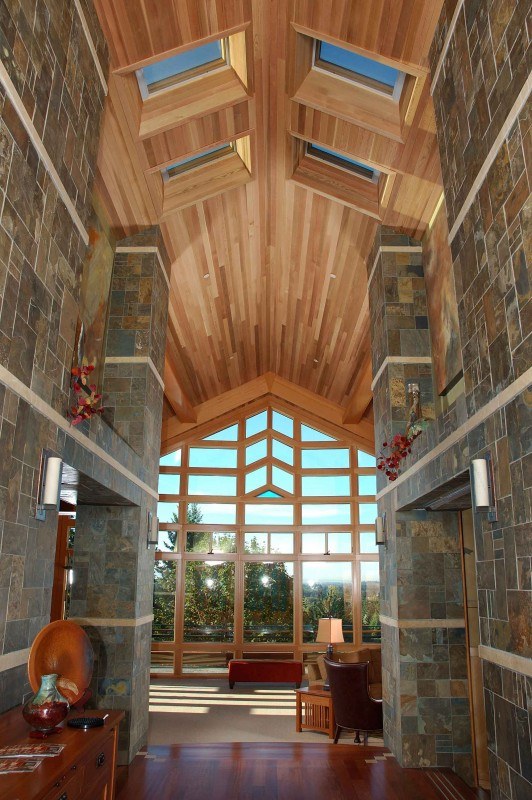 An important acoustical property of wood is its ability to damp vibrations. Wood has a cellular network of minute interlocking pores which converts sound energy into heat by frictional and viscoelastic resistance.
An important acoustical property of wood is its ability to damp vibrations. Wood has a cellular network of minute interlocking pores which converts sound energy into heat by frictional and viscoelastic resistance.
Because of the high internal friction created by the cellular pore network, wood has more sound damping capacity than most structural materials. Floor, ceiling and wall assemblies of wood can provide effective economical sound insulation and absorption when properly utilized. Western Red Cedar is particularly effective in this regard and can be used to help reduce noise or to confine it to certain areas.
Durability
Historically, native peoples of the Pacific coast prized cedar for its long lasting qualities and used wood and bark from cedar trees for most of their building needs. Evidence of cedar’s durability are the many cedar artifacts still in good condition today.
Properly finished and maintained, cedar will deliver decades of trouble-free service. If exposed for prolonged periods to conditions where decay could be a factor, such as where the wood is in contact with the ground, cedar should be treated with suitable wood preservatives.
Flame Spread Rating
Safety
Flame Spread Index
Flame spreading ratings describe the surface burning characteristics of interior finishes. They are used to regulate the use of interior finish materials to reduce the probability of rapid fire spread. Materials are burned in a test furnace for a relative assessment of flammability. The lower the flame spread rating, the more the material resists the spread of fire.
Building codes in North America generally define as interior finish any exposed material that forms part of the building interior. This usually includes interior wall and ceiling finishes, flooring, windows, doors and other wood products. US codes set the maximum flame spread rating for interior wall and ceiling finishes in most buildings at 200. The flame spread rating for Western Red Cedar is 45 (Class B rating).
Smoke developed classifications reflect the amount of smoke released by burning material. They are used in conjunction with flame spread ratings to regulate the use of interior finish materials where the potential to generate smoke or control smoke movement is of major fire safety importance.
US codes set the maximum smoke developed classification for interior wall and ceiling finishes in most buildings at 450. The smoke developed index for Western Red Cedar is 125.
Western Red Cedar’s flame spread rating and smoke developed classification compare well with the ratings of many other species of both softwood and hardwood. Because of its favorable performance, Western Red Cedar can be used for interior finish in some building applications where other species would not be permitted.
Sizing & Density
Product Selection
Products, Grades and Sizes
There are few more versatile building materials than Western Red Cedar which is ideal both for indoor and outdoor uses. Western Red Cedar lumber is available in visual stress grades for construction and finishing uses in a range of lengths, widths and thicknesses. It is available in clear or knotty grades with smooth surfaced, combed or rough sawn finishes; kiln dried or unseasoned (green); flat grain and vertical grain.
For nominal widths, thicknesses and grades of some commonly available Western Red Cedar lumber products, see the Cedar Products section
Western Red Cedar is used to manufacture a range of specialty products such as siding, paneling, structural decking and outdoor decking. Detailed product information is available from the Western Red Cedar Lumber Association.
Cedar produced by the Western Red Cedar Lumber Association includes specialty end use grades as well as products graded to National Lumber Grading Authority (NLGA) rules. NLGA grades are approved by the American Lumber Standards Board of Review and are accepted under all US building codes.
Table 1. Comparative Softwood Densities (pcf)
| SPECIES | OVEN-DRY DENSITY |
|---|---|
| Western Red Cedar | 21 |
| Douglas Fir | 31 |
| Ponderosa Pine | 27 |
| Southern Pine | 34 |
Table 2. Size Differential Between Unseasoned and Dry Lumber
| NOMINAL DIMENSION (INCHES) | SIZE DIFFERENTIAL BETWEEN UNSEASONED AND DRY LUMBER AFTER SURFACING (INCHES) |
|---|---|
| 1½ or less | 1/32 |
| 2 to 4 | 1/16 |
| 5 to 7 | 1/8 |
| 8 or more | 1/4 |
Table 3. Shrinkage of Western Red Cedar
RADIAL
| DIRECTION OF SHRINKAGE | SHRINKAGE IN PERCENTAGE | |||||
|---|---|---|---|---|---|---|
| FROM GREEN (25% OR GREATER MOISTURE CONTENT) TO: | FROM KILN DRIED (15% AVERAGE MOISTURE CONTENT) TO: | |||||
15% | 12% | 6% | 15% | 12% | 6% | |
0.96 | 1.2 | 1.8 | 0 | 0.3 | 1.0 | |
| TANGENTIAL | 2.0 | 2.6 | 3.8 | 0 | 0.7 | 2.1 |
Notes:
- Radial shrinkage applies to the width of vertical grain lumber: tangential to the width of flat grain lumber.
- Shrinkage does not begin until the fiber saturation point is reached.
- 15% is the average equilibrium moisture content of wood during the summer in the Pacific Northwest.
- 12% is the summer average equilibrium moisture content in dry areas of the US.
- 6% is the average equilibrium moisture content for interiors of heated buildings.
© 2025 All rights reserved
Gatsby Website Development by Jambaree
